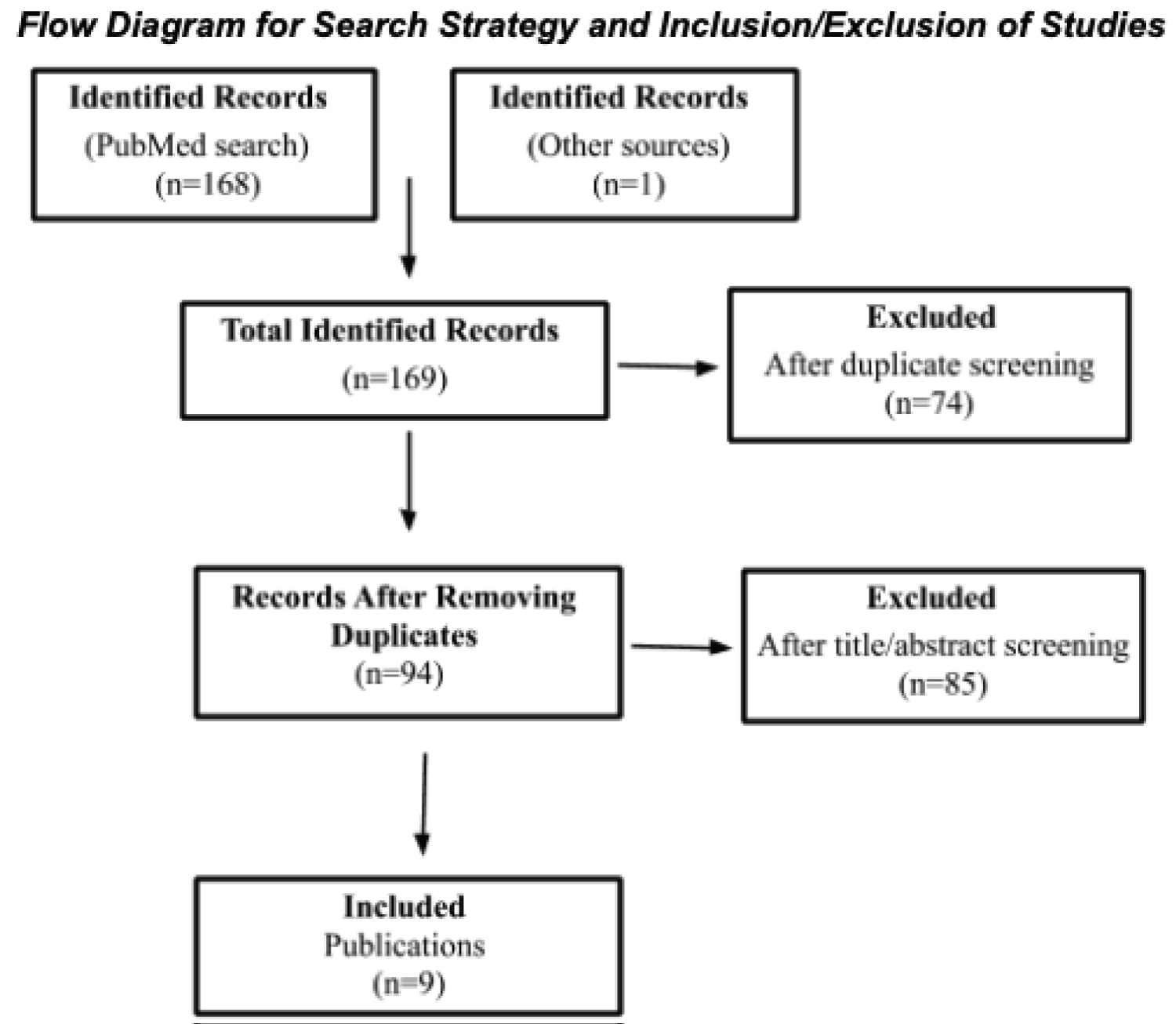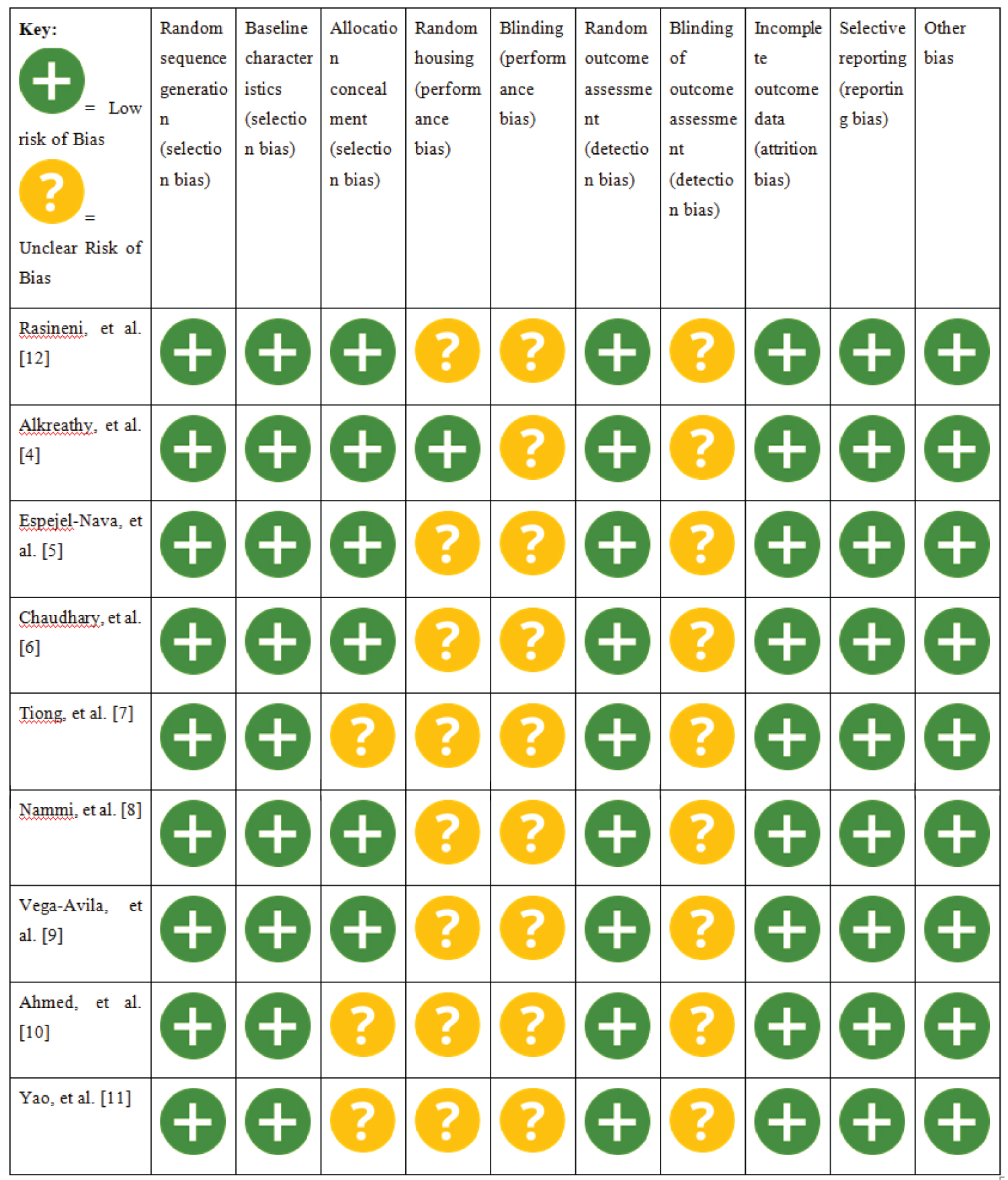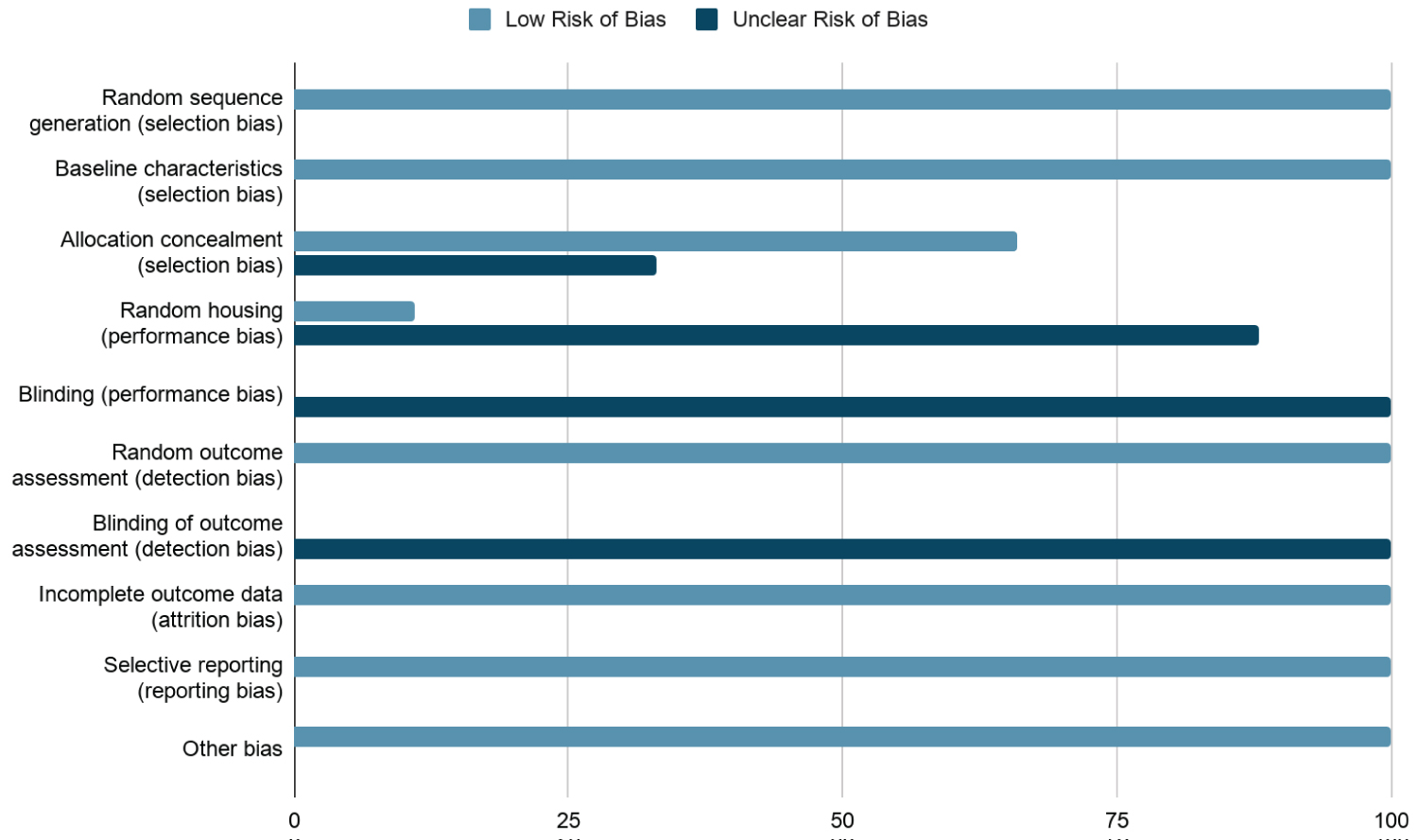Background: Diabetes mellitus refers to a group of metabolic diseases, in which the patient experiences high levels of blood glucose due to an insufficient production of insulin by the pancreas (Type I diabetes) or an inability of his/her body to respond to the insulin produced (Type II diabetes). Catharanthus roseus (C. roseus) is a plant that belongs to the Apocynaceae family, and has long been used as a natural medicine for Type-1 and Type-2 diabetes in the Ayurvedic system of medicine. This systematic review aims to summarize and provide an overview of the results of several studies that have been conducted to evaluate the plant's antidiabetic efficacy.
Methods: Publications from the databases PubMed and SpringerLink were searched up until August 2020. Publications and studies were considered based upon their relevance, impact, and recency. Studies that analyzed the antihyperglycemic and antidiabetic effects of C. roseus, and that had an English title and abstract were included. Extraction and content analysis were performed systematically.
Results: In total, 169 publications were identified that had been published up to August 2020, of which 9 publications that analyzed the antihyperglycemic and antidiabetic effects of C. roseus were included after being assessed for eligibility and undergoing an exclusion process based on finding duplicates and assessing content.
Conclusion: The results from all the studies were consistent in that they corroborated hypoglycemic activity by C. roseus and decreased/controlled blood glucose levels in their experimental subjects. These antidiabetic properties of C. roseus are accounted for by the augmented production of glucose-stimulated insulin from beta cells that were otherwise impaired and augmented the expression of GLUT-2 and GLUT-4 genes in the experimental subjects.
Systematic review, C. roseus, Diabetes, Preclinical, Natural medicine
Diabetes mellitus refers to a group of metabolic diseases, in which the patient experiences high levels of blood glucose due to an insufficient production of insulin by the pancreas (Type 1 diabetes) or an inability of his/her body to respond to the insulin produced (Type II diabetes) [1]. The etiological factors for type I diabetes have not been confirmed; however, scientists have identified autoimmune causes, in which the immune system attacks the insulin producing beta cells [1]. On the other hand, those who are overweight or have familial history of type II diabetes are more disposed to the condition [1]. Symptoms may include increased appetite, frequent urination, and increased thirst [1]. Prolonged periods of high blood sugar levels as characterized by diabetes may lead to severe complications when untreated. This disease is a significant determinant of heart attacks, blindness, kidney failure, stroke, and amputations of limbs [1]. In 2019, approximately 9.3% of the global population, which equates to about 463 million people worldwide, suffered from diabetes mellitus, whilst the disease also accounted for about 1.92 million deaths in the same year [2,3]. As morbidity rates for diabetes augmented over the decades, new medications and treatment procedures tailored for each type of diabetes came about. Glucose lowering medications, such as metformin, NPH insulin, and GLP-1 agonists, are administered in the form of oral drugs or injections [1]. Although insulin therapy is effective, it can result in various side effects after prolonged periods of treatment, such as insulin resistance, fatty liver, anorexia nervosa, and brain atrophy [4].
Catharanthus roseus (C. roseus) is a flowering plant that belongs to the Apocynaceae family, and its flowers, leaves, and roots have long been used as a natural medicine for Type-1 and Type-2 diabetes as well as other ailments in the Ayurvedic system of medicine [4].
This systematic review aims to provide an overview of the results of several studies that have been conducted to evaluate the plant's efficacy in lowering blood sugar levels as well as its ability to treat other blood glucose related illnesses.
This systematic review was conducted in accordance with the quality requirements of the PRISMA guideline, and the protocol was not pre-registered in the PROSPERO database.
All included research studies were carried out by adopting the guidelines of a relevant ethics committee on the use and care of laboratory animals.
No human studies were included.
The searched databases were PubMed and SpringerLink, and publications from the inception of the database to August 2020 with an English title and abstract were included. The reference lists from applicable reviews were also screened for additional articles. Search terms used included "Catharanthus roseus Diabetes", "Catharanthus roseus Glucose", and "Catharanthus roseus Diabetes" OR "Catharanthus roseus Glucose". The database search resulted in 169 articles, and a total of 74 duplicates were removed. Three non-English articles were excluded, and 81 non-pertinent articles were excluded after abstract screening, leaving a total of 9 primary research articles.
Publications and studies were considered based upon their relevance, impact, and recency. Full texts of relevant articles were screened for studies that analyzed the antihyperglycemic and antidiabetic effects of C. roseus. The search strategy was set up using free-text terms. Studies were included if they involved the testing of Catharanthus roseus extracts or components on diabetes induced test subjects, including strains of rabbits, mice, rats, or pancreatic cells. Studies in which C. roseus extracts or organic compounds were not administered, or those without appropriate controlled groups were excluded. Studies were excluded if full English language texts were not available. Studies that focused on the efficacy of C. roseus to treat other diabetes-induced secondary diseases were not included.
When relevant, the method of inducing diabetes in the experimental groups was extracted from each of the studies. The studies were also screened for the method or route of administering C. roseus and characteristics of the animal samples, including sample size, sample type, type of diabetes mellitus that was induced, sex, and age. Studies in which one or more sample characteristics were not found were screened again, and if the data was not found after a second screening, the reviewer made note of the specific sample characteristics that were not found; those studies were not excluded (Table 1 and Figure 1).
 Figure 1: Flow Diagram for Search Strategy and Inclusion/Exclusion of Studies. View Figure 1
Figure 1: Flow Diagram for Search Strategy and Inclusion/Exclusion of Studies. View Figure 1
Table 1: Search strategy in PUBMED from 1989 to August 2020. View Table 1
Risk of Bias was assessed for each study with the use of SYRCLE's RoB tool for animal studies [5]. The author (DT) independently assessed the risk of bias of the included studies across domains of sequence generation, baseline characteristics, allocation concealment, random housing, blinding, random outcome assessment, incomplete outcome data, and selective outcome reporting. Each domain had three possible judgments: "low risk", "high risk" or "unclear risk".
In total, 169 publications were identified that had been published up to August 2020, of which 9 publications that analyzed the antihyperglycemic and antidiabetic effects of C. roseus were included (Table 2).
Table 2: Study Characteristics. View Table 2
Risk of Bias was assessed for each study with the use of SYRCLE's RoB tool for animal studies [5]. Risks of bias in each of the domains for each included study is summarized in Figure 2 and each risk of bias item is presented as percentages across all included studies in Figure 3. The studies were at low risk of bias for random sequence generation, baseline characteristics, allocation concealment, random outcome assessment, incomplete outcome data, selective reporting, and other bias. Details of random housing conditions, blinding, and blinding of outcome assessment were poorly described across the majority of the studies.
 Figure 2: SYRCLE's Risk of bias summary.
View Figure 2
Figure 2: SYRCLE's Risk of bias summary.
View Figure 2
 Figure 3: SYRCLE's Risk of bias graph.
View Figure 3
Figure 3: SYRCLE's Risk of bias graph.
View Figure 3
This is the first systematic review that analyzes the existing research regarding the efficacy of Catharanthus roseus to treat diabetes; nine studies were identified. Four of the studies evaluated the efficacy of C. roseus to treat Type 1 diabetes, four of the studies evaluated the efficacy of C. roseus to treat Type 2 diabetes, and one study tested the plant's efficacy to treat both types. Eight of the studies utilized strains of rats or mice to test the plant on, while one study utilized pancreatic rat cells in vitro. Two of the studies isolated particular alkaloids present in the plant and tested those on their experimental groups, while the other seven studies administered extracts from the entire plant or from particular parts of it, such as from its flowers, leaves, roots, and/or stem. The results from all the studies were consistent in that they corroborated hypoglycemic activity by C. roseus and decreased/controlled blood glucose levels in their experimental subjects.
Although full texts could be found for most of the studies identified, only the abstracts could be found for two of them. As a result, those particular studies could not be scrutinized in as great detail as the others. Withal, all of the studies identified were performed on animals resulting in a lack of data regarding the plant's effects on humans.
In overall establishment, C. roseus exhibited antihyperglycemic activity and significantly decreased blood glucose levels in the test subjects; administration of the plant resulted in prolonged action of reduction of blood glucose in comparison to standard diabetes drugs, such as glibenclamide. It, in fact, induced the secretion of glucose-stimulated insulin from beta cells that were otherwise impaired and augmented the expression of GLUT-2 and GLUT-4 genes. Defects in the activities of key enzymes of glycolytic pathways were ameliorated, whilst diabetes-induced damage to blood and tissue in the subjects were reversed. Specific components of C. roseus, such as vindoline, vindolicine, vindolidine, vindolinine, gallic acid, and chlorogenic acid were isolated and identified as having hypoglycemic properties. The propitious and consistent results of the studies examined could provide as a basis for further studies of the efficacy of the plant in human trials. C. roseus could be utilized as a prevention of diabetes complications and as a possible herbal/natural cure for diabetes mellitus.
Not applicable.
The Author, Dhrithi Tummala, declares that there is no conflict of interest.